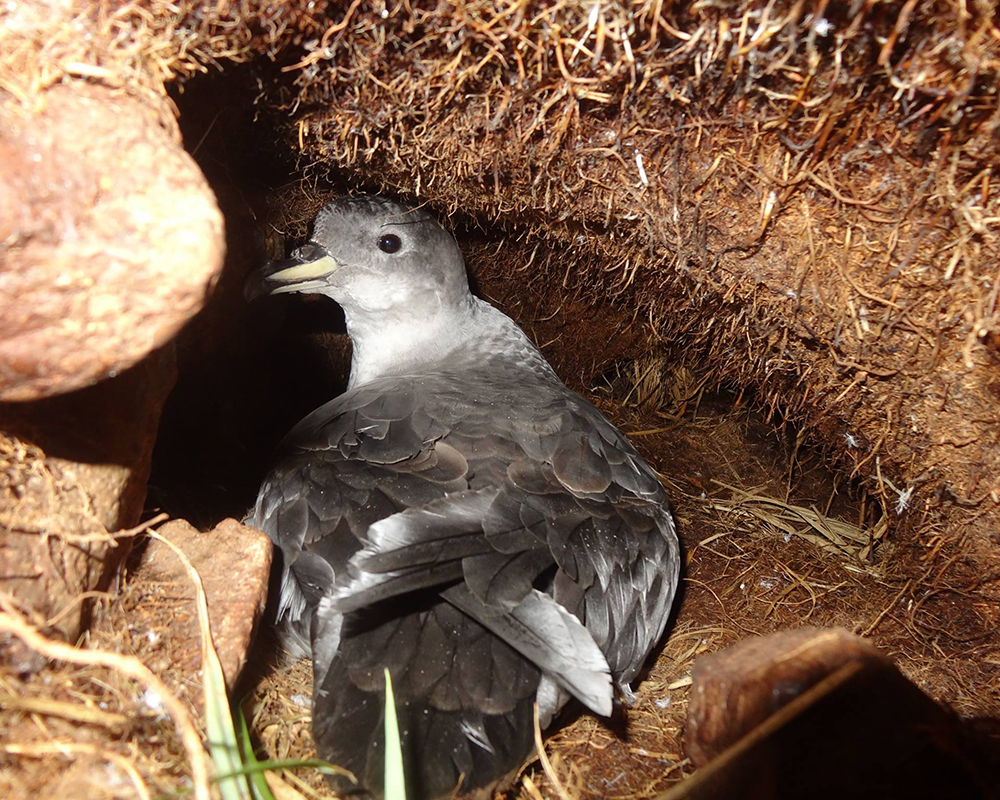
Delivering science for saving species: A few of our big successes
Tuesday, 09 March 2021Better outcomes from biodiversity offsets
To function as intended, biodiversity offsetting depends on a robust quantified understanding of both the amount of impact a development will cause to a threatened species or community, and the benefit that will result from offset actions proposed by a developer.
The latter, estimating the offset benefit, has been difficult for many communities and species, such as the northern quoll or malleefowl, due to a lack of evidence about the effectiveness of management actions.
To fill this gap, Professor Martine Maron’s team (UQ) has developed a benefit expert elicitation method, which has been used by the Queensland Government to improve outcomes for Queensland’s threatened species, and is expected to be a valuable resource for other biodiversity offset managers nationwide.
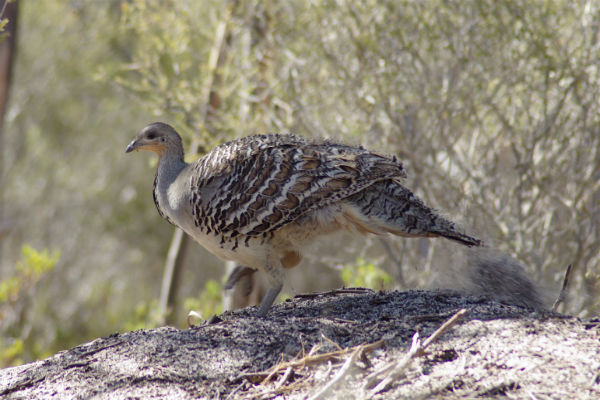
Malleefowl. Image: Butupa, Wikimedia Commons, CC2.0
Getting fish past manmade barriers
A significant cause of native fish declines is barriers to fish movement, which can lead to population fragmentation and loss of access to key habitat. A team led by Professor Craig Franklin (UQ) used a biohydrodynamics laboratory to fill critical knowledge gaps about the swimming ability and behaviour of key native fish species, and tested existing and novel designs for fishways.
Their research now underpins the New South Wales Department of Primary Industries Fisheries’ Road Crossing Design Guidelines that are currently being drafted, and will help reduce the impact of manmade barriers that limit native fish from accessing key habitat.
The team delivered both the largest quantified dataset on native fish swimming ability and a practical and cost-effective new design for culverts that waterway managers and engineers can use to improve native fish passage through retrofitted and new waterway culvert designs.
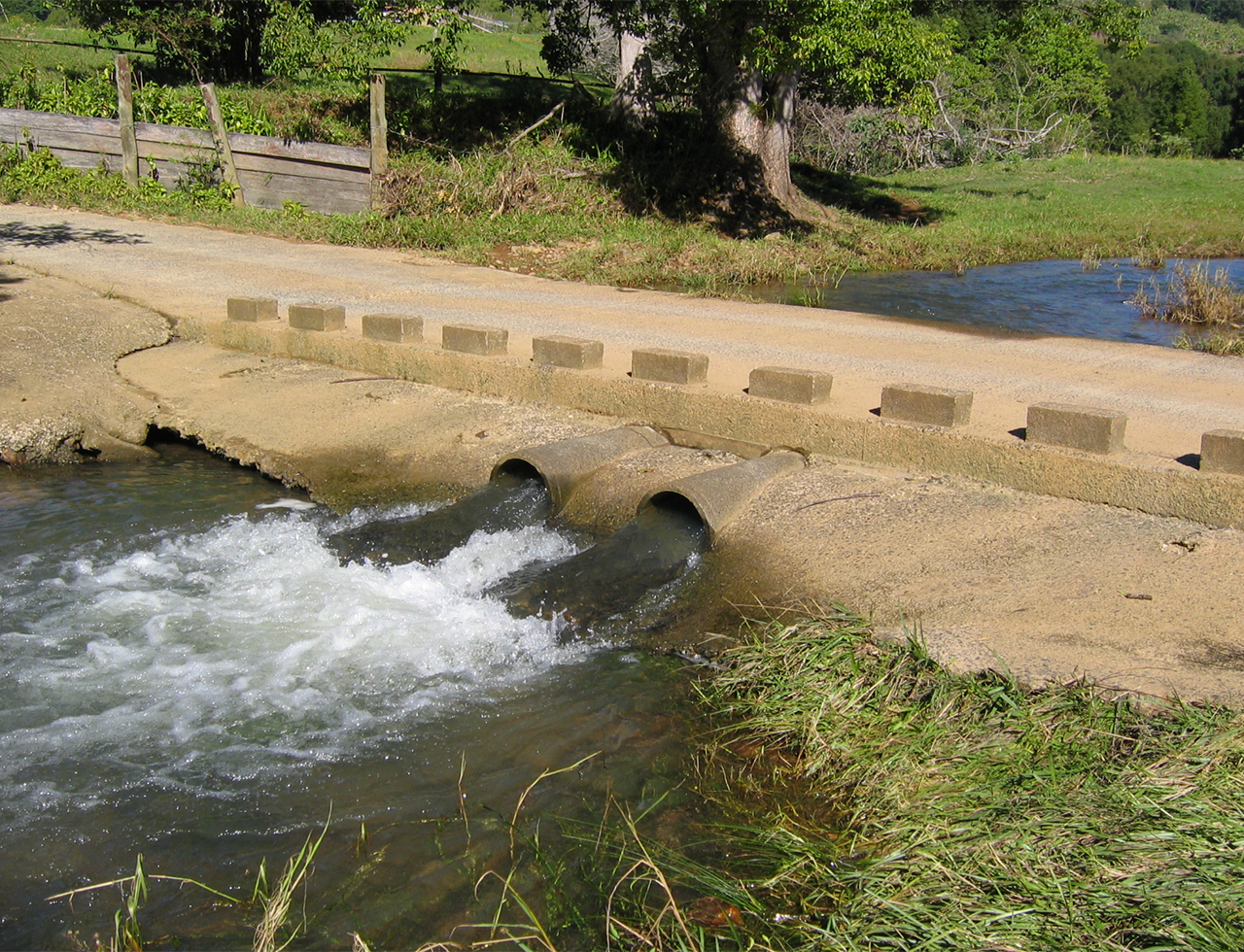 Road culverts can be major barriers to fish movement. Image: Matthew Gordos
Road culverts can be major barriers to fish movement. Image: Matthew Gordos
Improving Australia’s havens network
Research led by Professor Sarah Legge (ANU/UQ) will have major benefits for mammals that are susceptible to cats and foxes and to Australia’s conservation haven network of cat- and fox-free islands and fenced reserves.
The national team identified which mammal species most urgently need the protection of a haven to support their persistence, and where Australia’s future havens should be developed in order to provide the greatest conservation benefit across all mammal species that are susceptible to predation by feral cats and foxes.
Their work is already guiding investment decisions to support new havens through the Environment Restoration Fund – Safe Havens Grants, and has informed actions in the Australian Government’s Threatened Species Strategy on “tackling feral cats”, and “safe havens for species most at risk”.
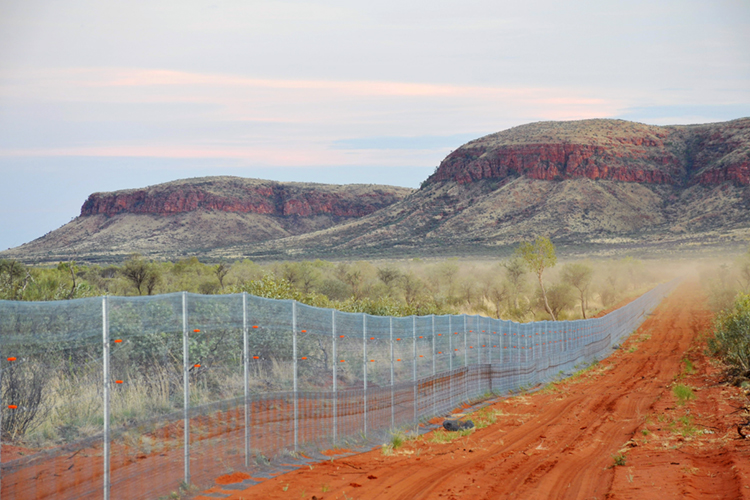 The fence at Australian Wildlife Conservancy’s Newhaven Sanctuary. Image: AWC
The fence at Australian Wildlife Conservancy’s Newhaven Sanctuary. Image: AWC
Managing the impacts of cats
The hub’s large and integrated program of research to better understand and manage the impact of cats on Australian wildlife was shortlisted for the prestigious Eureka Prize for Applied Environmental Research.
The work led by Professor Sarah Legge (ANU/UQ) and Professor John Woinarski (CDU) has included: the first robust estimates of the cat populations in Australia and their toll on wildlife; testing and improving poison-baiting and trapping methods; integrated control of cats and other pests including rats, rabbits and foxes; and managing fires and grazing to maintain habitat refuges and reduce predation impacts.
The findings have provided a broad and comprehensive evidence base that supports coordinated action by states and territories through the work of the Feral Cat Taskforce, and meets many of the research targets identified in the Australian Government’s Threat Abatement Plan for Predation by Feral Cats. Hub findings were also referenced 53 times in the final report of the Parliamentary inquiry into the problem of feral and domestic cats in Australia.
The hub’s high-impact communication campaigns on the research findings have also informed and significantly advanced public conversation about cat control, which has increased support for cat management.
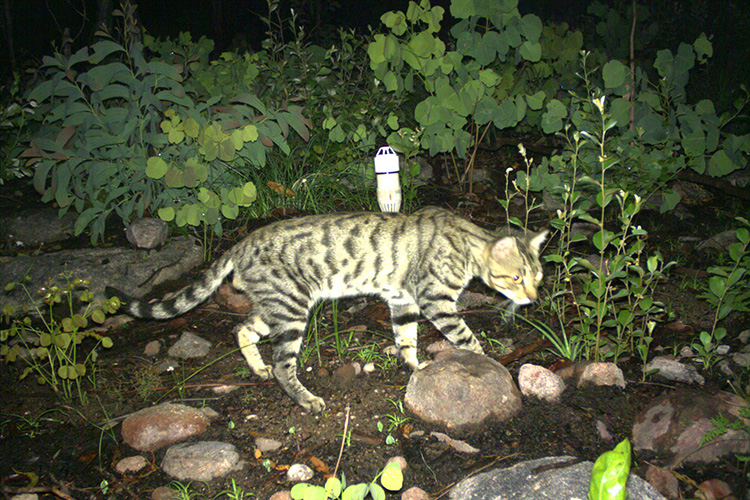 A feral cat in a conservation area. Image: Northern Territory Government
A feral cat in a conservation area. Image: Northern Territory Government
Recovering biodiversity impacted by Black Summer fires
Almost three billion animals were killed or displaced in the 2019–20 bushfires. Following the fires we worked closely and quickly with Commonwealth, state and territory governments to identify and deliver the science they needed to recover fire-affected species and communities.
This included working with the Expert Panel to rapidly analyse and determine the species most affected and the management actions that were most needed to prevent their extinctions and help their recovery. We helped develop collaborations across research, landholder, government agency and other groups to deliver essential research, monitoring and management actions needed for recovery.
We also helped to develop and apply criteria to identify priority projects for government investment, and supported regional workshops on recovery actions and investments for fire-affected biodiversity which were facilitated by Dr Libby Rumpff.
Additionally, we informed the community of the extent and consequences of biodiversity loss in the fires, which contributed to public support for biodiversity recovery investments.
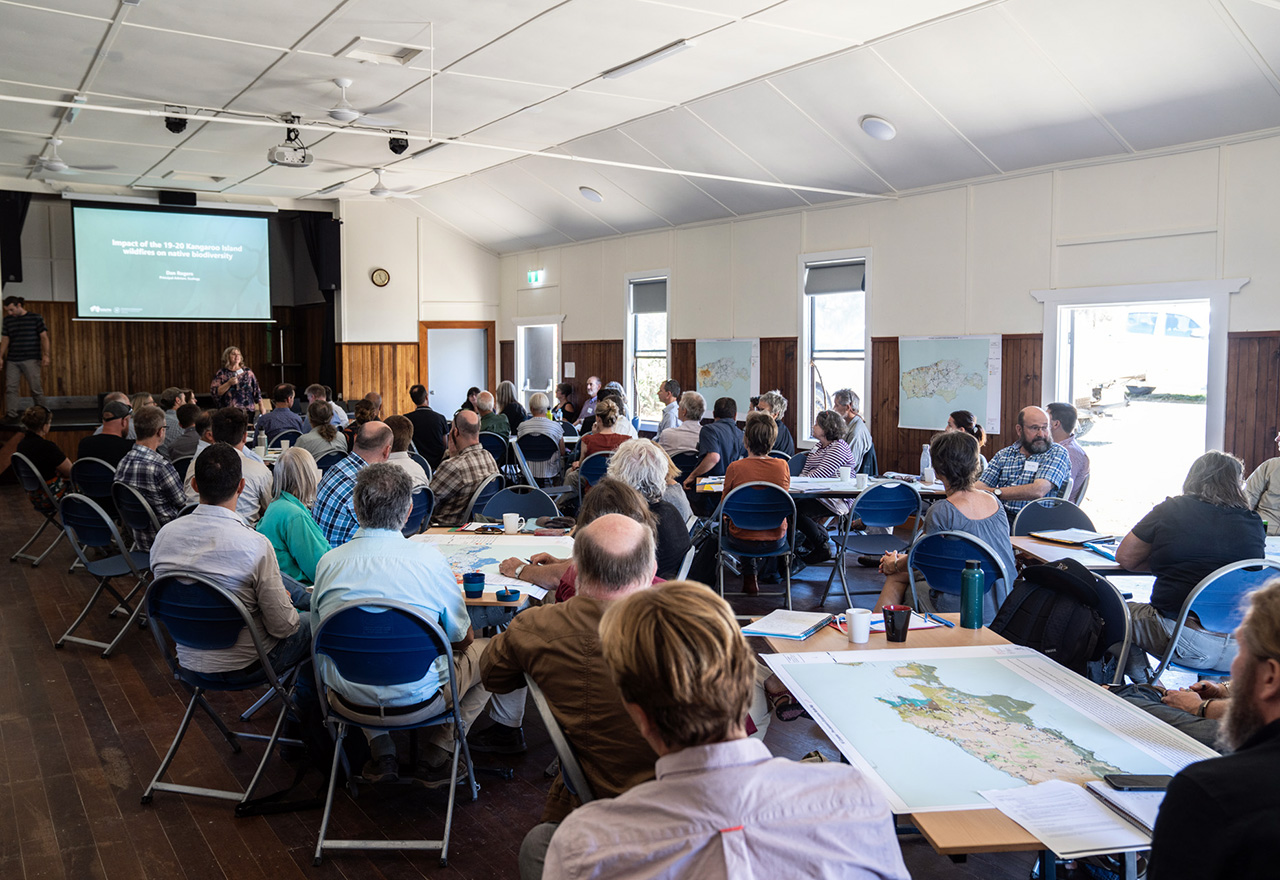 The fire-recovery workshop on Kangaroo Island. Image: Nicolas Rakotopare
The fire-recovery workshop on Kangaroo Island. Image: Nicolas Rakotopare
Improving threatened plant translocation
Dr David Coates (DBCA) led a national team that undertook a review of every known plant translocation project Australia-wide and other integrated research which has substantially advanced knowledge, capacity and support for successful threatened plant translocations.
The work has greatly advanced our understanding of factors affecting the success of projects; genetic management of translocated populations; and how to best implement, monitor and learn from ongoing projects.
New knowledge from the research has underpinned the development of new processes adopted by DBCA which: assess trade-offs and synergies between in situ and ex situ plant species conservation; assess the cost-effectiveness of translocations compared to other recovery; and are used to prioritise
plant translocation projects.
Guidelines for the translocation of threatened plants in Australia developed by the team were presented at workshops across the country and widely distributed. They are now being used by threatened plant policy-makers and conservation managers nationwide and have been adopted into the New South Wales translocation operational policy.
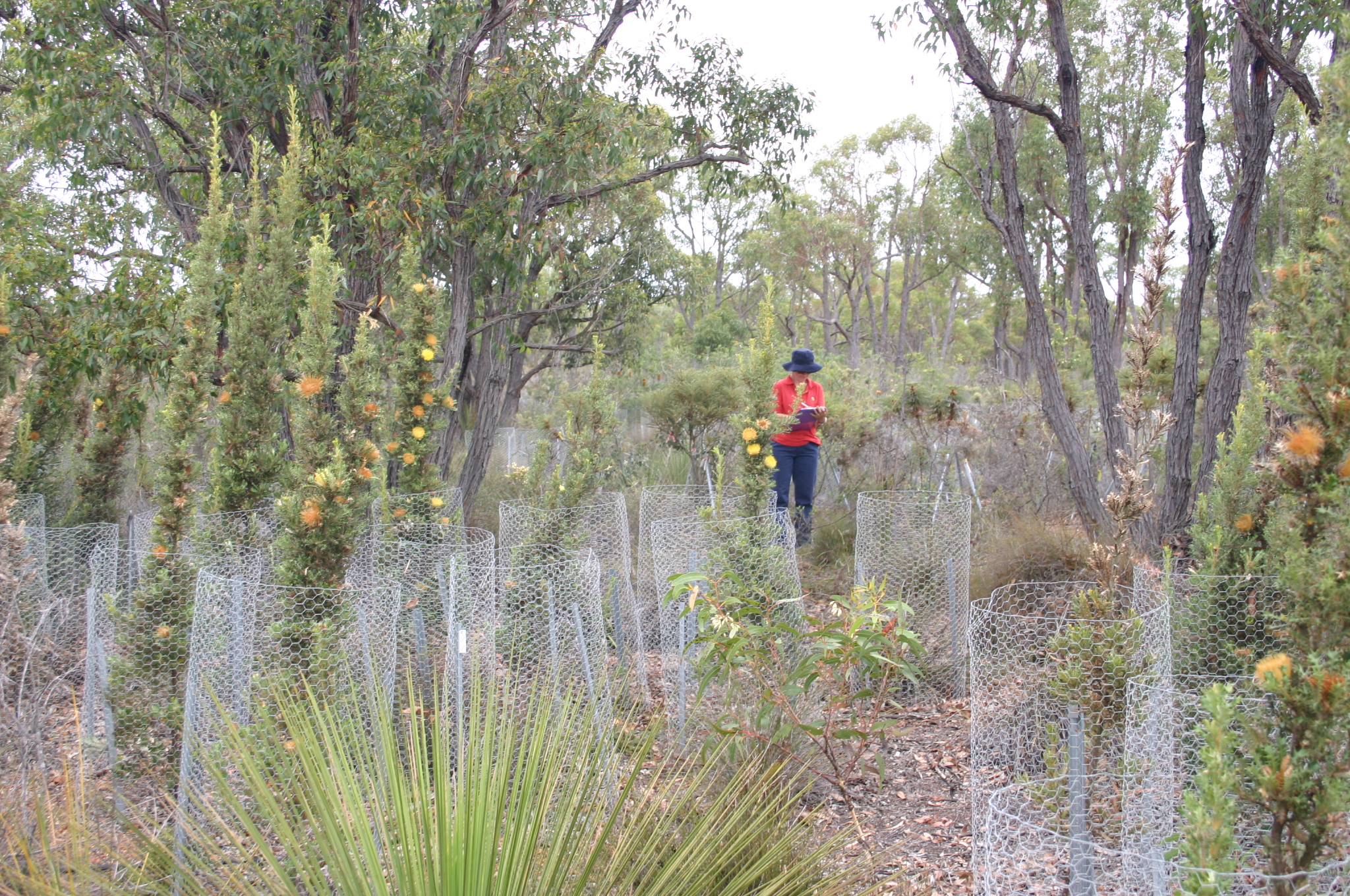 Banksia anatona translocation site in Western Australia. Image: Leonie Monks
Banksia anatona translocation site in Western Australia. Image: Leonie Monks
Supporting threatened biodiversity monitoring
The hub has delivered essential new knowledge and tools to support improved threatened biodiversity monitoring across Australia.
Professors David Lindenmayer (ANU), Sarah Legge (ANU/UQ) and John Woinarski (CDU) drew together over 70 of the most experienced managers and scientists involved with monitoring programs in Australia to develop a framework, detailed guidance, case studies and book to support improved monitoring of threatened species and ecological communities.
At a regional scale, we provided input to the redesign of a large-scale national park monitoring program and worked with Indigenous groups on arid zone monitoring based on Traditional Ecological Knowledge and tracking skills. We also supported Indigenous groups to develop practical monitoring programs targeted to their own biodiversity management priorities, such as Martu’s Mankarr (bilby) monitoring program, and Karajarri’s investigation of fire management effects on biodiversity.
We developed new and efficient methods for hard-to-monitor species like dusky and silver-headed antechinuses, black-cockatoos, burrowing petrels, the Kangaroo Island dunnart, brush-tailed rabbit-rat and brush-tailed phascogale. Plus we tested a range of practical and emerging monitoring methods such as artificial habitat, thermal cameras, drones and eDNA.
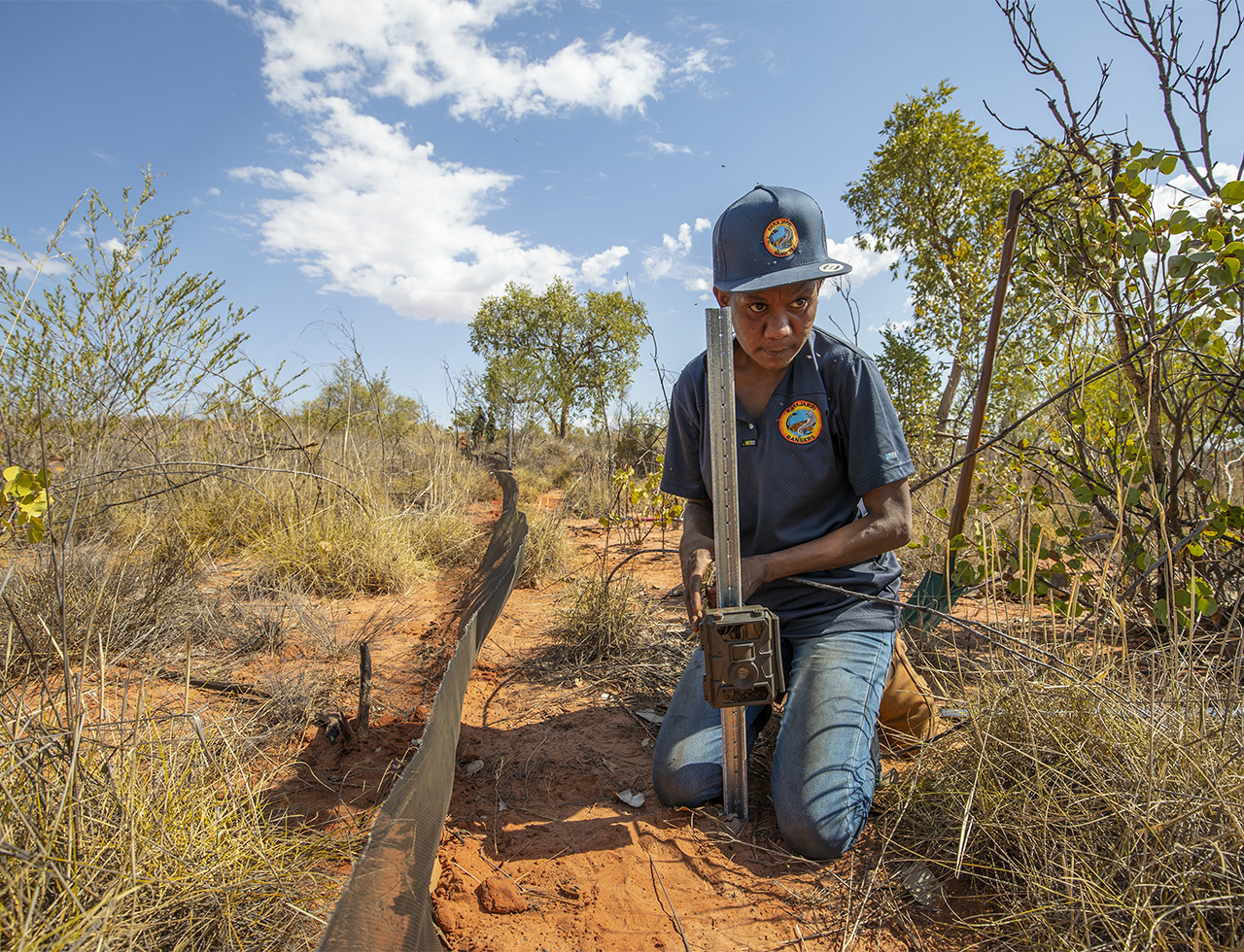 Karajarri Ranger Marissa Munroe setting up a camera trap, pit traps and drift fence. Image: Nicolas Rakotopare
Karajarri Ranger Marissa Munroe setting up a camera trap, pit traps and drift fence. Image: Nicolas Rakotopare
Developing the ecology policy-makers of the future
The hub has nurtured 65 PhD, three masters and six honours students. By embedding students in collaborations with on-ground conservation managers we have ensured that their work will make a valuable contribution to important real-life challenges.
For example, working closely with Parks Australia, Jessica Agius (USyd) has made major advances in our understanding of and management options for a new disease that is impacting threatened reptiles on Christmas Island.
As part of a DBCA threatened plant conservation team, Leonie Monks (Murdoch) and Rebecca Dillon (UWA) have uncovered key factors influencing the survival and persistence of a range of threatened
plants, which will improve translocations of these species.
Working with Bush Heritage Australia, Nicholas Leseberg (UQ) has vastly expanded knowledge about the night parrot and how to detect and monitor it, which has already underpinned new detections in Western Australia and will substantially contribute to the recovery plan for the species.
Being part of collaborations like these and providing them with additional guidance on how to work with policy-makers (see p10) gives our early career researchers important experience that will support them to continue to make an impact in future roles.
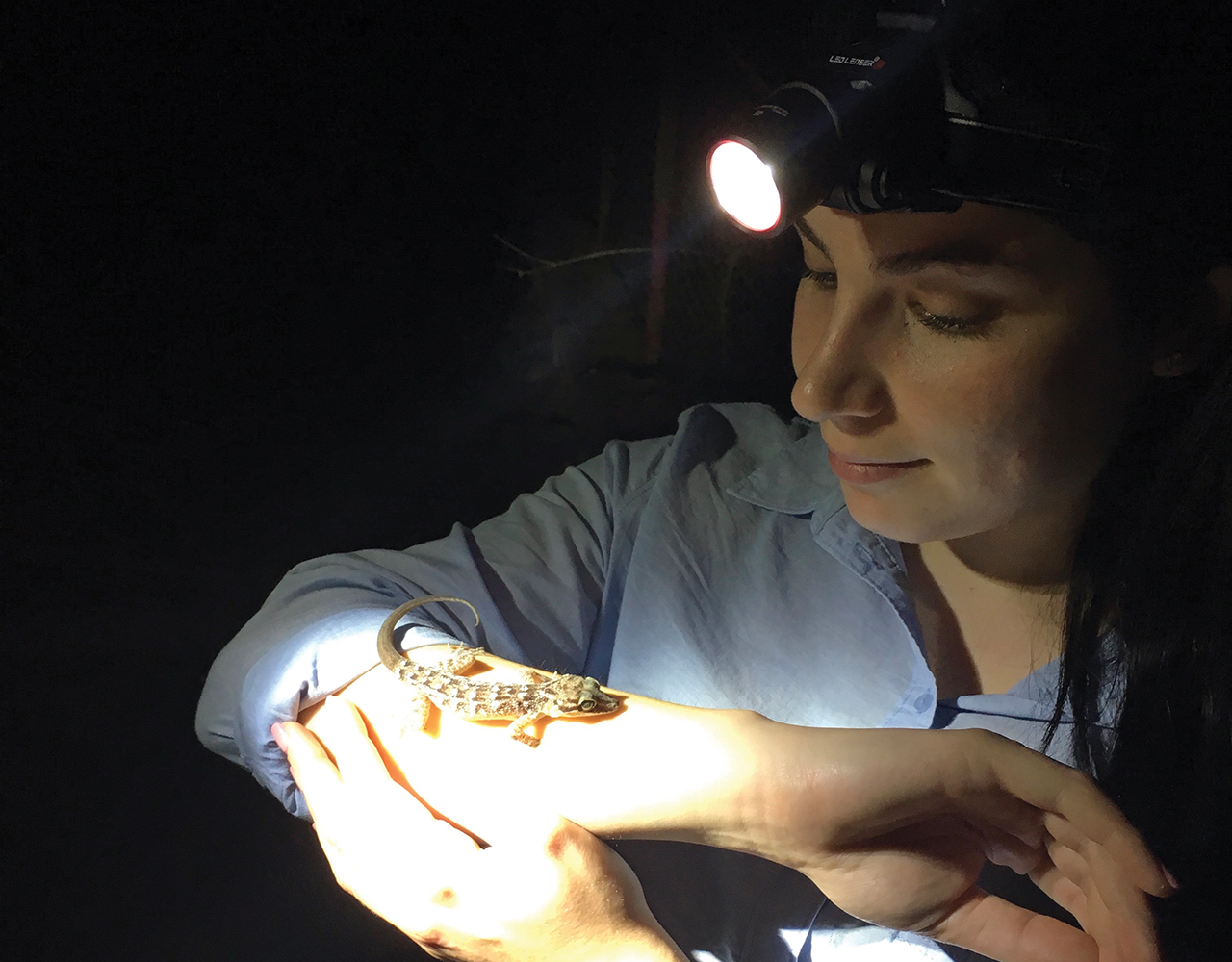 PhD candidate Jessica Agius with a Christmas Island gecko. Image: David Phalen
PhD candidate Jessica Agius with a Christmas Island gecko. Image: David Phalen
Top image: Burrowing petrel. Image: Jez Bird